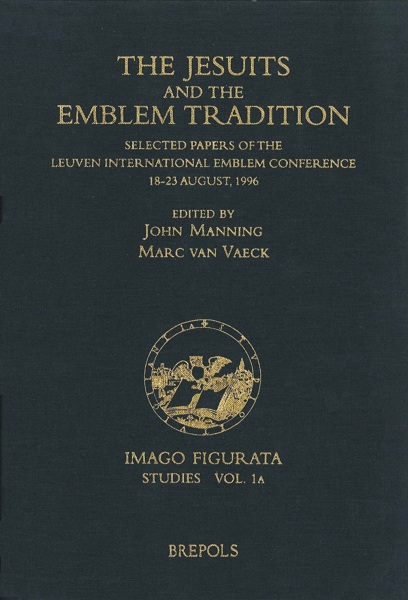
- Pages: vi + 234 p.
- Size:216 x 280 mm
- Illustrations:2 b/w, 127 col.
- Language(s):English
- Publication Year:2025
- € 100,00 EXCL. VAT RETAIL PRICE
- ISBN: 978-2-503-60721-4
- Paperback
- Available
Festival Emblems: A Paradox along the Triumphal Route is a book on the contradictory relation between emblems and civic festivals, and between erudition and propaganda in the northern triumphal tradition (Joyous Entries) during the sixteenth and seventeenth centuries.
Tamar Cholcman is a senior lecturer and chair of the department of Art History, Tel Aviv University, and book review editor of Emblematica: Essays in Word and Image Journal. Her research focuses on the Ephemeral Art of Festivals during the 16th and 17th centuries, in general, and on Festival Emblems, in particular including, her first book, Art on Paper: The Triumphal Entry of the Archdukes Albert and Isabella into Antwerp, 1599 (Turnhout: Brepols, 2014).
In early modern culture, civic festivals and emblem books were amongst the more privileged genres of Early Modern culture. Although both are connected in their use of word and image, they are nonetheless separated in their very essence. The former, a public event celebrated usually at night and involving, alongside ephemeral monuments, lights, fireworks, music, ceremonies, and theater performances, was for the spectator an all-encompassing experience. It was intended to propagate either the ruler or the city’s political agenda. The latter was conceived as an intellectual pastime and intended to be read, deciphered, and discussed within the private sphere, in the company and studious ambiance of the literati. Emblems and festivals, nonetheless, maintained a kind of symbiotic exchange. Whereas public monuments of the triumphal entries found their way into the printed form of festival books, emblems migrated from their printed form into the public sphere, where they were used to adorn the ephemeral monuments of the triumphal entries. How then, do the practices of emblem reading, which require careful decryption of words and images, relate to the viewing practices of triumphal processions? The book examines this paradox and argues that the inclusion of emblems in festivals reveals the hermeneutic mechanism of the learned. By using emblems, the designers of civic festivals marked their territory within the power hierarchies and established their dignity and authority as experts in both the civic and intellectual circles. In the festival ambit, festival emblems epitomize the perfect paradoxical union of persuasion and erudition.
Chapter One
The Intermedial Festival Emblem: An Introduction
Chapter Two
Caught Between Two Minds: Sambucus’s Arcus aliquot triumphales et monumenta as Festival and Emblem Book
Chapter Three
Emblems in Triumphal Entries: From Title to Visual Footnotes
Chapter Four
Emblems as Text: The Academic Triumphus
Chapter Five
The Interactive Emblem at Festivals: The Reader/Viewer as Player
Chapter Six
The Emblem Turn: From Festival to Emblem Book
Chapter Seven
Festival Emblems for a New Elite: An Epilogue
Bibliography
Index




